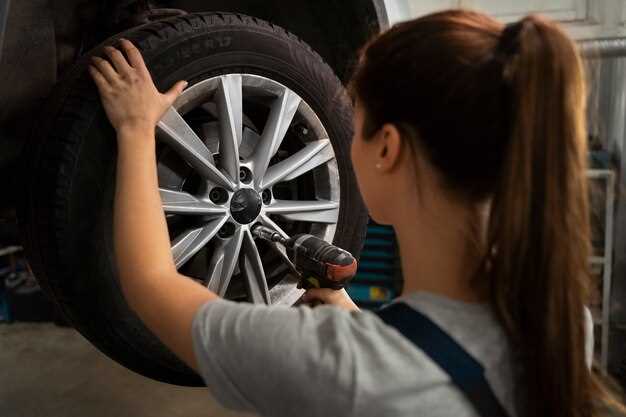
How to Rotate Your Tires at Home
- Arthur Rodriquez
- 0
- Posted on

Tire rotation is a crucial part of vehicle maintenance that can significantly extend the life of your tires and improve your car’s handling. Understanding the basics of tire rotation and mastering this diy task can save you both time and money. Regularly rotating your tires helps to ensure even wear, which in turn enhances safety and performance on the road.
Whether you’re a seasoned mechanic or a novice car owner, this guide will provide you with straightforward steps to effectively rotate your tires at home. With just a few basic tools and some attention to detail, you’ll be able to perform this essential maintenance task easily. Knowing the correct rotation pattern specific to your vehicle type is also vital for achieving optimal results.
In this article, we will cover the necessary tools, the step-by-step rotation process, and essential tips to make your tire rotation smooth and efficient. Get ready to roll up your sleeves and embrace the diy spirit as you enhance your vehicle’s performance through proper tire maintenance!
Essential Tools and Equipment for Tire Rotation

To successfully perform a tire rotation at home, having the right tools and equipment is crucial. Firstly, a reliable car jack is essential for lifting the vehicle safely. Choose a jack that is compatible with your car’s weight and design.
Next, jack stands are necessary to support the vehicle once it is raised. These provide stability and safety while you perform the rotation, preventing the car from falling unexpectedly.
A torque wrench is another important tool. It ensures that the lug nuts are tightened to the manufacturer’s specified torque during reassembly. This is vital for maintaining proper wheel security and avoiding future issues.
Additionally, a basic set of socket wrenches or a lug wrench will be needed to remove and replace the lug nuts easily. This allows for quick and efficient tire removal and installation.
Finally, having a tire pressure gauge is beneficial to check the pressure in each tire after rotation. Proper inflation is key to maintaining tire performance and longevity.
Step-by-Step Process for Rotating Your Tires

Start by gathering the necessary tools: a jack, jack stands, and a lug wrench. Ensure your vehicle is parked on a flat, stable surface and turn off the ignition.
Loosen the lug nuts on each tire slightly, but do not remove them yet. This step is easier to accomplish while the tires are still on the ground.
Using the jack, lift one side of the vehicle until the tire is off the ground. Place jack stands under the vehicle for safety. Ensure the vehicle is stable before proceeding.
Remove the loosened lug nuts completely and take the tire off the wheel hub. Place it in a safe location away from the work area.
Decide on the rotation pattern based on your vehicle type. For front-wheel drive vehicles, move the front tires to the back on the same side, and the rear tires to the front diagonally. For rear-wheel drive, do the opposite.
Install the tires in their new positions and hand-tighten the lug nuts to secure them. Ensure they are correctly aligned with the wheel hub.
Lower the vehicle back to the ground and remove the jack stands. Again, tighten the lug nuts using the lug wrench in a crisscross pattern to ensure even distribution of pressure.
Finally, check the tire pressure for each tire and adjust as necessary. This will ensure optimal performance and safety.
Common Mistakes to Avoid During Tire Rotation
When engaging in a DIY tire rotation, several common mistakes can undermine your efforts and potentially compromise safety. It’s crucial to be aware of these pitfalls to ensure an effective rotation process.
One frequent mistake is neglecting to check the vehicle’s manual for the recommended rotation pattern. Different vehicles require specific patterns to optimize tire wear. Ignoring this can lead to uneven tire wear and decreased performance.
Another common error is failing to properly jack up the vehicle. Many DIY enthusiasts skip safety precautions, such as using jack stands. This increases the risk of accidents. Always ensure the vehicle is securely raised and supported before beginning the rotation.
Additionally, some individuals overlook checking the tire pressure both before and after the rotation. Tires should be inflated to the manufacturer’s recommended pressure to maintain optimal performance and safety. Neglecting this step can alter handling and lead to premature tire wear.
A third mistake is not inspecting the tires for damage. While rotating your tires, take the opportunity to examine them for any signs of wear, punctures, or other issues. This can help you identify problems early and avoid potentially dangerous situations on the road.
Lastly, many forget to tighten the lug nuts adequately after reinstallation. Under-tightening can lead to lug nut loosening while driving, creating a hazardous situation. Always make sure to tighten them according to the recommended torque specifications.
By avoiding these common mistakes, your DIY tire rotation can be not only successful but also a crucial step in maintaining your vehicle’s overall health and safety.